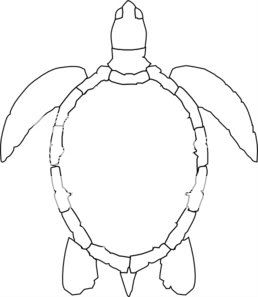Car Preschool Crafts
There are many crafts that can follow a car theme. The following suggestions are appropriate for toddlers as well.
1.Car Painting: allow young children to paint with cars by placing some spoonfuls of tempera paint onto large pieces of paper and provide small cars and trucks to drive. It is a good idea to choose cars or trucks that have treads on the wheel for they will make more visible tire tracks. Alternatively, the cars can be sitting in a tray of paint.
2.License Plate Rubbings: find old license plates for cars. Each child can create a crayon rubbing of the plate by placing a tracing paper over top and then using the side edge of crayons to create the image.
3.Collective Mural: on a bulletin board, the preschool teacher will place a large picture of a road. The children can cut out car pictures from magazines and then paste them onto the road to help make a classroom mural. This class project also works well for a transportation theme.
4.Shapes: provide children with different shapes, such as rectangles, squares, circles and small triangles and allow them to create cars out of the shapes. This art activity works well with a class demonstration and visual cue for the children to follow.
Car Preschool Songs
Overall, transportation songs can be included into a car preschool lesson plan. The following song is more specific to a car theme.
Twinkle twinkle little star
My daddy drives a motor car
Push a button, and pull the choke
Off he goes with a puff of smoke
Twinkle twinkle little star
My daddy drives a motor car.
Another important lesson to include into a car theme for a preschool class is to discuss safety, and the lights which are used to direct traffic. This following song will correlate well with a game of Go, Go, Stop.
To the tune of "Twinkle, Twinkle Little Star" –
Twinkle, twinkle traffic light
On the corner shining bright
Red means stop, and green means go
Yellow means go very slow
Twinkle twinkle traffic light
On the corner shining bright
Children Activities for a Car Theme
.JPG)
1.Car Painting: allow young children to paint with cars by placing some spoonfuls of tempera paint onto large pieces of paper and provide small cars and trucks to drive. It is a good idea to choose cars or trucks that have treads on the wheel for they will make more visible tire tracks. Alternatively, the cars can be sitting in a tray of paint.
2.License Plate Rubbings: find old license plates for cars. Each child can create a crayon rubbing of the plate by placing a tracing paper over top and then using the side edge of crayons to create the image.
3.Collective Mural: on a bulletin board, the preschool teacher will place a large picture of a road. The children can cut out car pictures from magazines and then paste them onto the road to help make a classroom mural. This class project also works well for a transportation theme.
4.Shapes: provide children with different shapes, such as rectangles, squares, circles and small triangles and allow them to create cars out of the shapes. This art activity works well with a class demonstration and visual cue for the children to follow.
Car Preschool Songs
Overall, transportation songs can be included into a car preschool lesson plan. The following song is more specific to a car theme.
Twinkle twinkle little star
My daddy drives a motor car
Push a button, and pull the choke
Off he goes with a puff of smoke
Twinkle twinkle little star
My daddy drives a motor car.
Another important lesson to include into a car theme for a preschool class is to discuss safety, and the lights which are used to direct traffic. This following song will correlate well with a game of Go, Go, Stop.
To the tune of "Twinkle, Twinkle Little Star" –
Twinkle, twinkle traffic light
On the corner shining bright
Red means stop, and green means go
Yellow means go very slow
Twinkle twinkle traffic light
On the corner shining bright
Children Activities for a Car Theme
.JPG)
Car Matching: this matching game can be made out of felt material for the flannel board or other material. The matching activity promotes color recognition. On a flannel board, the teacher will place different color garages. Alternatively, the garages could hold numbers or shapes. Each child in the circle will be provided a matching car with the same color and/or design. The children will be asked to bring their car to the board to place their felt piece into the appropriate garage.
Cars on Trays: instead of cars in the sandbox, which is thoroughly enjoyed by young children, try placing cornmeal on a tray with a few cars. This activity can be a singular station in the classroom.
Cars on Trays: instead of cars in the sandbox, which is thoroughly enjoyed by young children, try placing cornmeal on a tray with a few cars. This activity can be a singular station in the classroom.
Spelling Car: on clean juice lids, stick letters on one side and then turn upside down onto a table. For this activity, a child will use a magnet wand to lift the lids to try and make the word car. The process helps with letter skills.
Threading a Car: provide children with a car shape made out of a thick piece of paper with holes punched out around the edge of the shape. The shape will hold a string with a knot at the end through one hole, to allow a child to thread the string through the other holes. This activity is wonderful for fine motor development in young children.











